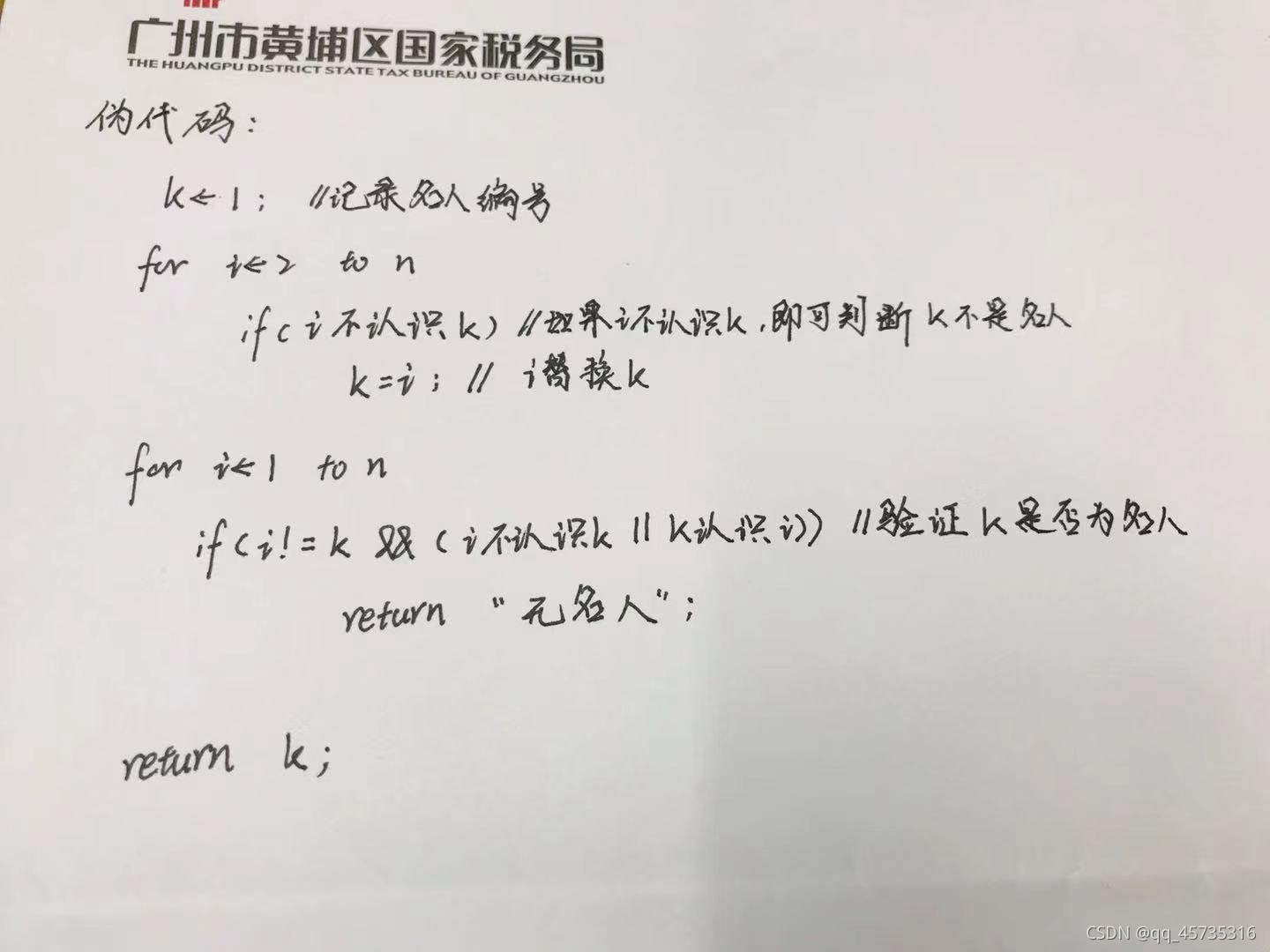算法设计与分析习题
题解:数据小的情况下可以用程序运行出结果
递归算法,C++实现代码如下,

#include <iostream>
using namespace std;
using gg =long long;
/* run this program using the console pauser or add your own getch, system("pause") or input loop */
/*move方法一次移动一个盘子*/
void move(gg n,char A,char C){
cout<<n<<":"<<A<<"->"<<C<<endl;
}
/*汉诺塔递归函数*/
void hanoi(gg n,char A,char B,char C){//n个盘子,b为辅助柱
if(n==1){
move(1,A,C);//只有一个盘子时直接从A移到C
}
else{
hanoi(n-1,A,C,B);//把n-1个盘子从A移到B,借助C
move(n,A,C);//把编号为n的盘子从A移到C
hanoi(n-1,B,A,C);//把剩下的n-1个盘子从B移到C
}
}
int main(int argc, char** argv) {
hanoi(4,'A','B','C');
return 0;
}
但是n=64运算量过于庞大,只能通过列举找规律的方法推导(虽然这种方法一点也不严谨,但是这种一看起来就有规律的东西也不妨一试)
推导如下:
n Steps
1 1
2 3
3 7
4 15
5 31
6 63
… …
60 264-1
推导的结果就是n层汉诺塔的移动步数F(n)=2n-1
根据网上搜索到的数据,移动完64层汉诺塔一共需要264-1=18,446,744,073,709,551,615步
若一秒一步,移动完64层汉诺塔需要5845.54亿年
非递归算法:网上代码+自己的理解
void Myhanoi(gg n,char a,char b,char c){
//struct student s[30]结构体数组声明方式
struct act{int flag;gg num;char x,y,z;} S[2000];//用数组实现栈,act为数组存储的元素
gg top=0LL,m;
char ta,tb,tc;
//首元素入栈
S[0].flag=1;
S[0].num=n;
S[0].x=a;
S[0].y=b;
S[0].z=c;
//进入循环,相当于中序遍历二叉树
while(top>=0LL){
if(S[top].flag==0||S[top].num==1){
cout<<S[top].num<<":"<<S[top].x<<"->"<<S[top].z<<endl;
top--;
}
else{
//获取栈顶元素,相当于根节点
m=S[top].num;
ta=S[top].x;
tb=S[top].y;
tc=S[top].z;
// top++;//??????
//递归算法后操作的先入栈,覆盖栈顶元素,因为入栈的第一步操作不是将第m个圆盘从A移到C,而是将第m-1个圆盘从B移到C
S[top].flag=1;
S[top].num=m-1;
S[top].x=tb;
S[top].y=ta;
S[top].z=tc;
top++;
//遍历根节点
S[top].flag=0;
S[top].num=m;
S[top].x=ta;
S[top].y=tb;
S[top].z=tc;
top++;
//最后不需要移动栈顶,下一个循环会移动
S[top].flag=1;
S[top].num=m-1;
S[top].x=ta;
S[top].y=tc;
S[top].z=tb;
}
}
}
2.4.14
名人问题

伪代码:

算法复杂度:
第一个循环语句执行了n-1次,第二个循环执行了2*(n-1)次,总共执行了3*(n-1)次,时间复杂度为O(n)
2.5.2

自己的理解:

代码实现:求斐波那契数列
#include <iostream>
using namespace std;
using gg =long long;
/* run this program using the console pauser or add your own getch, system("pause") or input loop */
/*斐波那契兔子问题*/
int main(int argc, char** argv) {
gg n;
cin>>n;
gg a=0LL;
gg b=0LL;
gg c=0LL;
for(int i=1;i<=n;i++){
if(i==1){//第一天
a=1;
c=a;
}
else if(i==2){//第2天
b=1;
c=b;
}
else{
c=a+b;
a=b;
b=c;
}
}
cout<<c;
return 0;
}